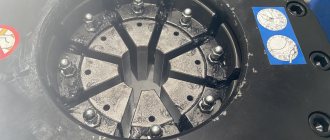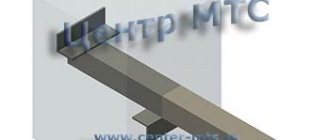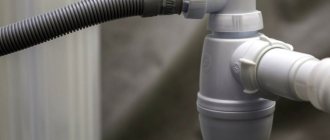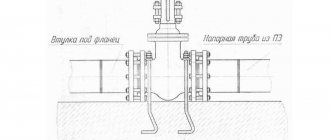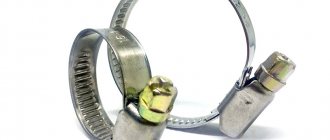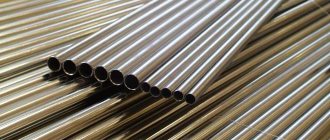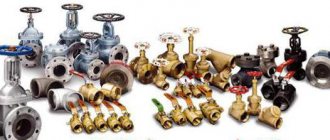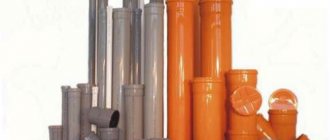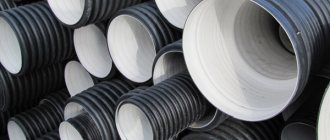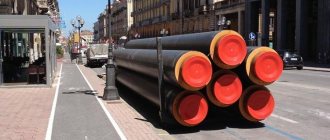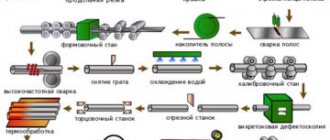The most convenient way to install drywall is to install sheets on a system of metal profiles. The process of arranging the frame is impossible without the use of special connecting elements. One of the fastenings that ensures the evenness and strength of the structure is the crab.
Crab device
The crab is a cross-shaped element, for the manufacture of which galvanized metal up to 1 mm thick is used. Each product has bent shaped legs with bends that allow you to snap the connector onto a metal profile. Additional legs with holes make it possible to connect the crab with the slats using self-tapping screws. Each product has five holes on the main plane, allowing it to be mounted on a load-bearing surface.
How much does it cost and who makes it?
Connectors for metal profiles are produced by many factories, one of the leading manufacturers is Knauf.
When producing crabs, the Knauf company takes into account the fact that shelf hanging systems are installed in different rooms, including those with temperature changes or high humidity.
To ensure that the connector can be used under any conditions, the company uses metals and coatings (uniform and high-quality galvanization) in their production that can withstand external loads and resist corrosion.
What is a cross connector used for?
Drywall crab connectors allow you to connect the transverse frame strips in one plane. Most often, products are used when long longitudinal load-bearing elements require the addition of cross members. To do this, the device is placed on the longitudinal element, snapped onto it, and crossbars are inserted into the side parts.
The crab connector can withstand loads of up to 20 kg. With a greater load, additional fixation is performed with self-tapping screws through the holes on the additional legs.
Experts recommend additionally fixing each connector, as this increases the strength of the structure several times with a minimum amount of time spent.
In some cases, the device can be used to longitudinally connect profile strips. Crabs have a lower price than special connectors, while the reliability of the connection is also high.
Alternative
When the number of connections is small, you can do without special connectors. You only need metal scissors and a drill with a diameter of 2 - 3 mm. The profile section is taken 8 - 10 cm longer than the required length. The ends of the plank are cut along the fold with scissors, and the side planks are bent to the sides.
The main advantage of the considered factory-made devices is that they do not need to be additionally held, and screwing in the screws can be done with one hand. A homemade mount must be supported with one hand. To make the task easier, you need to pre-drill holes in the bent side strips with a thin drill with a diameter of no more than 3 mm. The holes will prevent the screw from moving to the side. This will not affect the strength of the connection.
Types of crabs
Two types of connectors are used to attach drywall:
- Single-level crabs are used to connect profiles located at the same level, perpendicular to each other. The thickness of such an element does not exceed 0.06 mm; snapping is performed directly on the profile. When the load is high, the product is additionally fixed with self-tapping screws.
- Two-level crab connectors are used to fix the posts, which are also located at an angle of 90°, but at different levels. This product is fastened on both sides using self-tapping screws.
USEFUL INFORMATION: Using moisture-resistant drywall in the bathroom
Conclusion
We have dealt with different options for carrying out the work, but it’s up to you to decide how to fasten the frame in your home. All of the above techniques meet all the strength requirements if done correctly. The video in this article will help you better understand some important nuances of individual technologies, and if you still don’t understand something, then write questions in the comments under the review.
Did you like the article? Subscribe to our Yandex.Zen channel
September 28, 2021
Plasterboard systems, Fasteners, hardware, meshes and membranes
If you want to express gratitude, add a clarification or objection, or ask the author something, add a comment or say thank you!
Selecting elements
The main criterion when choosing crab connectors for drywall is the quality of the material, so you should pay attention to the following points:
- Presence of burrs. This defect is typical for low quality products. There is a risk of injury when using these connectors. In addition, the burrs indicate the use of low-grade material for the manufacture of the element, calling into question the strength characteristics of the connector.
- Rust on the surface. A defect of this nature occurs when the manufacturing process is violated or as a result of improper storage in warehouses.
In addition, the fixation of the curly petals on the profile should be clear, and the petals for additional fixation should bend without difficulty.
Types of fastening
Crab clamps differ in product shape and profile size. To connect rectangular and square metal pipes, the following are used:
- T-shaped crab systems - allow you to make a T-joint between two or three sections of a rectangular profile using two fastening units (bolts and nuts);
- L-shaped crab clamps - products designed for corner connections of two profiles using one fastening unit;
- X-shaped - cross joints connecting four sections of a metal profile; fasteners are installed in the resulting corners of the metal structure.
Depending on the profile size, you can choose different sizes of clamps. A universal option is the product 95*95 and 95*65 mm. There are also smaller products: 20*40, 20*30 and 20*20 mm.
Important! Fasteners must be selected strictly according to the size of the profiles being connected. If the structure is larger than the profile cross-section, this will lead to rapid loosening of the connection.
Connector location on frame
Very often, cross-shaped connectors are used when installing suspended ceiling structures made of plasterboard over large areas. To make the frame, the main profile and cross members are used. In this case, the crab connects metal profiles to each other, giving the frame strength and reliability.
Important! The correct placement of the crab connector will ensure the strength of the connection, so it is necessary to accurately determine its location. A small number of cross-shaped connectors over a large area can lead to weakening of the frame.
Advantages of the shadow joint of the KRAAB GIPPS system
In addition to aesthetics, the shadow gap has the function of an expansion joint , which helps preserve the appearance of the ceiling for many years. Over time, cracks appear on the plasterboard ceiling. This occurs due to loads on the ceiling associated with shrinkage of the house, changes in humidity characteristics and other changes during the operation of the room. The expansion joint removes all the loads from the drywall and takes them upon itself.
The most common types of loads are associated with linear expansions and geometric deviations. Linear expansion of drywall is a change in its length due to changes in temperature and humidity conditions. For every meter of length of a plasterboard sheet, an expansion of one millimeter occurs.
Crab installation
The reliability of the connection largely depends on the correct installation of the connecting element, so it is important to follow certain instructions:
- The product is taken so that the antennae are directed downwards.
- Place it on the profile from above and snap it into place using little force.
- The antennae are bent on four sides and attached to the metal profile using self-tapping screws.
- Installation of jumpers can be carried out only after the element is completely fixed on the main plane.
- It is best to fasten the connectors using special screws called clasps.
USEFUL INFORMATION: Do-it-yourself installation of a plasterboard ceiling box
The use of crabs for connecting profiles under plasterboard allows not only to increase the strength and reliability of the structure, but also to significantly reduce the time spent on its installation.
Application area
Using crab metal clamps, you can build almost any small-sized frame building or structure based on rectangular steel profiles.
Due to their versatility, crab systems are used both in private farming and in the agro-industrial sector, in trade, catering and service provision. We can list the main types of structures that are made using special clamps:
- prefabricated structures - hangars, canopies, awnings, pavilions, gazebos for surface parking lots, temporary warehouse complexes, summer areas of restaurants and cafes;
- stalls and other small architectural forms in retail trade;
- summer showers in the country, locker rooms, fences, enclosures for animals;
- greenhouses, greenhouses, conservatories and other indoor structures;
- advertising structures – pillars, tables;
- warehouse equipment - racks, cabinets, shelves and other products.
We recommend that you read: Application of corrugated pipes made of low-density polyethylene (HDPE)
To work with this type of fastener, you need the simplest tools and devices: a wrench, bolts and nuts. Having in front of them a diagram of connecting profiles, each person can independently build a frame structure, even without extensive experience in plumbing work.
Despite the low weight of the resulting structures, they are highly durable and can withstand static loads. Sheets of polycarbonate, plastic and glass, MDF, profiled sheets and other materials can be installed on a prefabricated frame connected using crab clamps.
Important! Before starting to assemble a metal structure, it is advisable to draw a diagram and calculate the maximum permissible load. If the permissible weight is exceeded, the clamps quickly become loose. Because of this, it is necessary to regularly carry out diagnostics and tighten the nuts manually.
Features and Benefits
Crabs are used when installing metal bases, no matter how complex they are. To understand the correct use of fasteners, it is worth understanding how the metal base is created.
Most often, plasterboard structures are fixed to a metal base. As such a frame, an iron lattice is usually used, which is a kind of analogue of the spine for the structure. It is this that becomes the support for walls, partitions, ceilings, and so on.
Sometimes plasterboard sheets are simply glued, in which case a base is not required. But this method is acceptable only when the surface is sufficiently flat. Otherwise, fasteners are used on a metal frame.
The basis for frames, as a rule, are guides and rack profiles. Sometimes wooden frames can also be used, but they may not be used in all structures. All metal profiles require fasteners.
In this capacity, you can use screws, dowels or self-tapping screws. However, the listed fasteners are inferior in reliability to crabs. You can also use a cutter. It is quite capable of replacing the crab, but such fasteners are outdated. This causes their low popularity.
Crabs are recognized as the most modern, practical and convenient option.
When using them, the duration of installation work is significantly reduced. Securing the base with crab-shaped fasteners provides the structure with a sufficient level of strength. In addition, such parts are quite flat, so they do not form drops or protrusions.
Advantages of using such fasteners:
- can be installed over large areas;
- when using a single-level crab, a fairly rigid frame structure is obtained, so you don’t have to worry about large static and dynamic loads;
- Very often, suspended ceilings are connected using crabs; this is one of the most suitable fasteners for such a design.
Thus, the main advantage of crabs compared to other similar fasteners is their reliability. Another positive aspect of choosing such fasteners is the affordable price. Thanks to the combination of these two qualities, crabs are so popular in the construction market today.
Location Features
Effective performance of the tasks of fasteners is only possible when each of them is located in the right place.
In order for the base to be reliable and serve for a long time, it is necessary to take into account some features:
- careful calculation of the location of fasteners, so that frames and plasterboard sheets will be secured in the most reliable way;
- creating a diagram in advance, thanks to which the installation of fasteners will be simpler and faster (the diagram should reflect the places where the parts will be located);
- ensuring reliable fastening with the help of special screws, which are also called bugs;
- the inadmissibility of any work before fastening the fasteners.
Efficiency
With the help of the devices in question, you can create a reliable and effective fastening that enhances the strength of the structure.
The functionality of crabs is obvious:
- With their help, plasterboard bases are secured regardless of the plane in which they are located.
- The use of such fasteners is independent. At the same time, the fastening is simple and as reliable as possible.
- Such parts are characterized by a high level of strength, which is ensured by a special design.
It is important to consider that all connectors must be distributed evenly across the drywall.
Drywall crab: pros and cons
Plasterboard sheets are often fastened using crabs, which are best suited for joining such materials. Let's consider the basic principles of working with such fasteners, their types, as well as the pros and cons of their use.
Drywall crab – universal fastening for profiles
Drywall is truly a universal material! Its capabilities were appreciated by many professional builders and home craftsmen. A perfectly flat surface, light weight, easy installation, excellent flexibility - all this together allows you to level surfaces, build interior partitions and create structures of amazing shapes.
In addition, when installing drywall, no particularly complex fastenings are required. All components are guides and rack profiles, hangers, connectors (crabs). But we’ll talk about the latest “things” in more detail.
Ceiling metal frame using crabs
